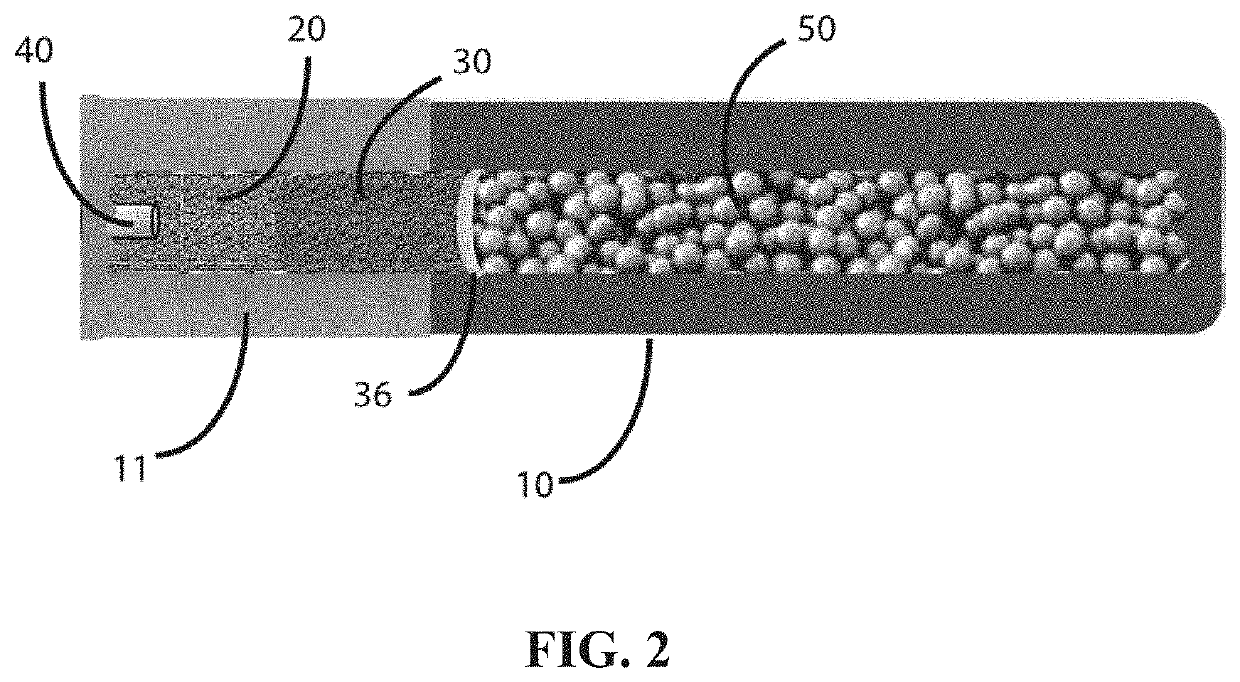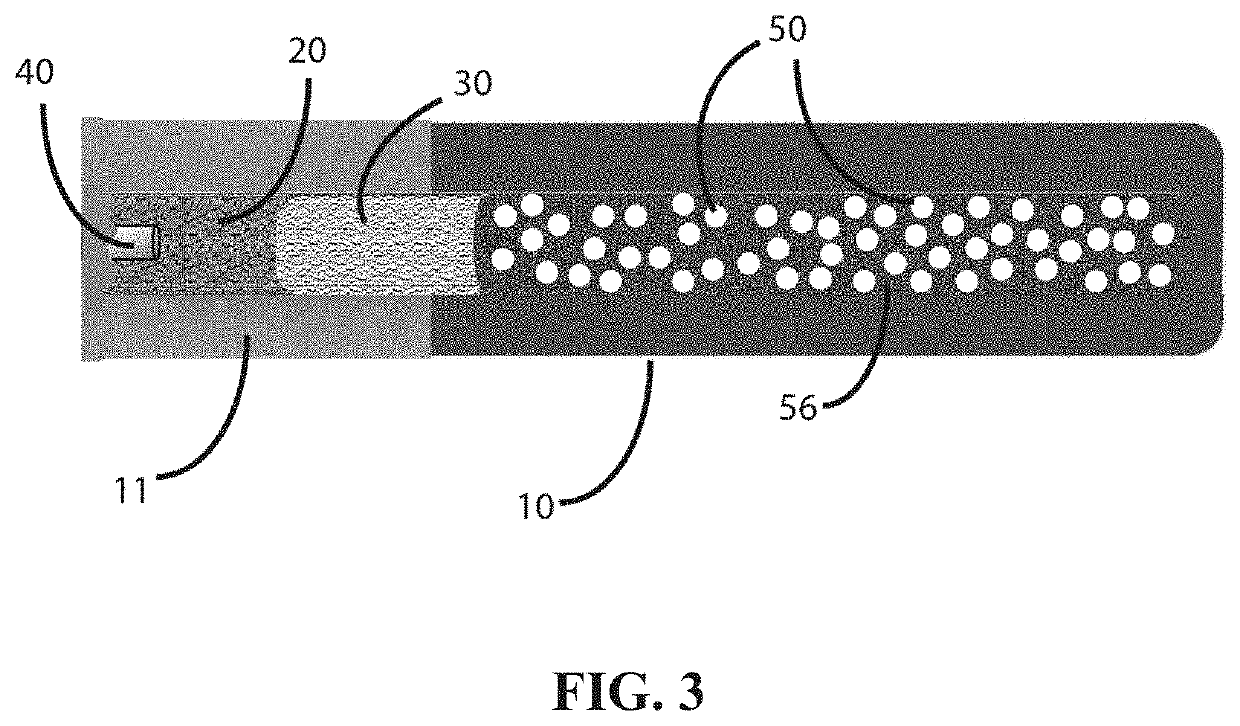Methods and devices for ammunition utilizing a particulate obturating medium
a technology of obturating medium and ammunition, which is applied in the direction of ammunition, shotgun ammunition, weapons, etc., can solve the problems of not obturating or sealing the compressed hot gas, the wad is sized for a particular bore, and the performance of the firearm is decreased, so as to achieve convenient reloading and pleasant smell
- Summary
- Abstract
- Description
- Claims
- Application Information
AI Technical Summary
Benefits of technology
Problems solved by technology
Method used
Image
Examples
example 1
[0147]A granular formulation of PHA (MIREL® M2100, made by Metabolix Inc. in Cambridge, Mass.) comprising primarily particles between 150 microns and 212 microns in size was used as an obturating mix. A 3″, 12 gauge shotshell was loaded with a smokeless shotshell powder, the PHA obturating mix, and a 1 oz. lead slug, then roll crimped and fired, yielding a pellet velocity of 1331 fps. This material sealed well as an obturating medium, but was not suitable for high-speed, automated factory loading because of poor flow characteristics.
example 2
[0148]A granular formulation of polybutylene succinate comprising primarily particles between 212 microns and 420 microns in size was used as an obturating medium. A 3″, 12 gauge shotshell was loaded with a smokeless shotshell powder, the PBS obturating medium, and a 1 oz. lead slug, then roll crimped and fired, yielding a pellet velocity of 1347 fps.
example 3
[0149]A granular formulation of polycaprolactone comprising primarily particles between 420 microns and 600 microns in size was used as an obturating medium. A 3″, 12 gauge shotshell was loaded with a smokeless shotshell powder, the PCL obturating medium, and a 1 oz. lead slug, then roll crimped and fired, yielding a pellet velocity of 1327 fps.
PUM
| Property | Measurement | Unit |
|---|---|---|
| size | aaaaa | aaaaa |
| length | aaaaa | aaaaa |
| length | aaaaa | aaaaa |
Abstract
Description
Claims
Application Information
 Login to View More
Login to View More - R&D
- Intellectual Property
- Life Sciences
- Materials
- Tech Scout
- Unparalleled Data Quality
- Higher Quality Content
- 60% Fewer Hallucinations
Browse by: Latest US Patents, China's latest patents, Technical Efficacy Thesaurus, Application Domain, Technology Topic, Popular Technical Reports.
© 2025 PatSnap. All rights reserved.Legal|Privacy policy|Modern Slavery Act Transparency Statement|Sitemap|About US| Contact US: help@patsnap.com



